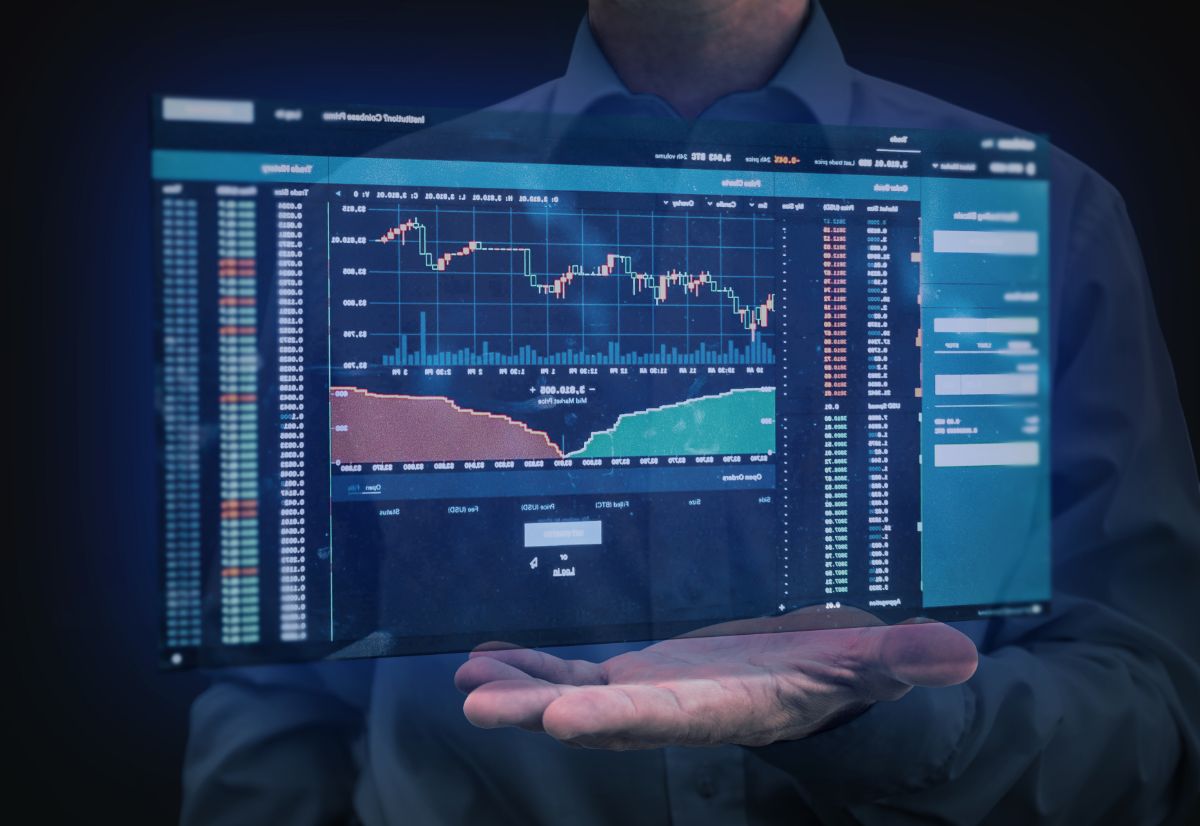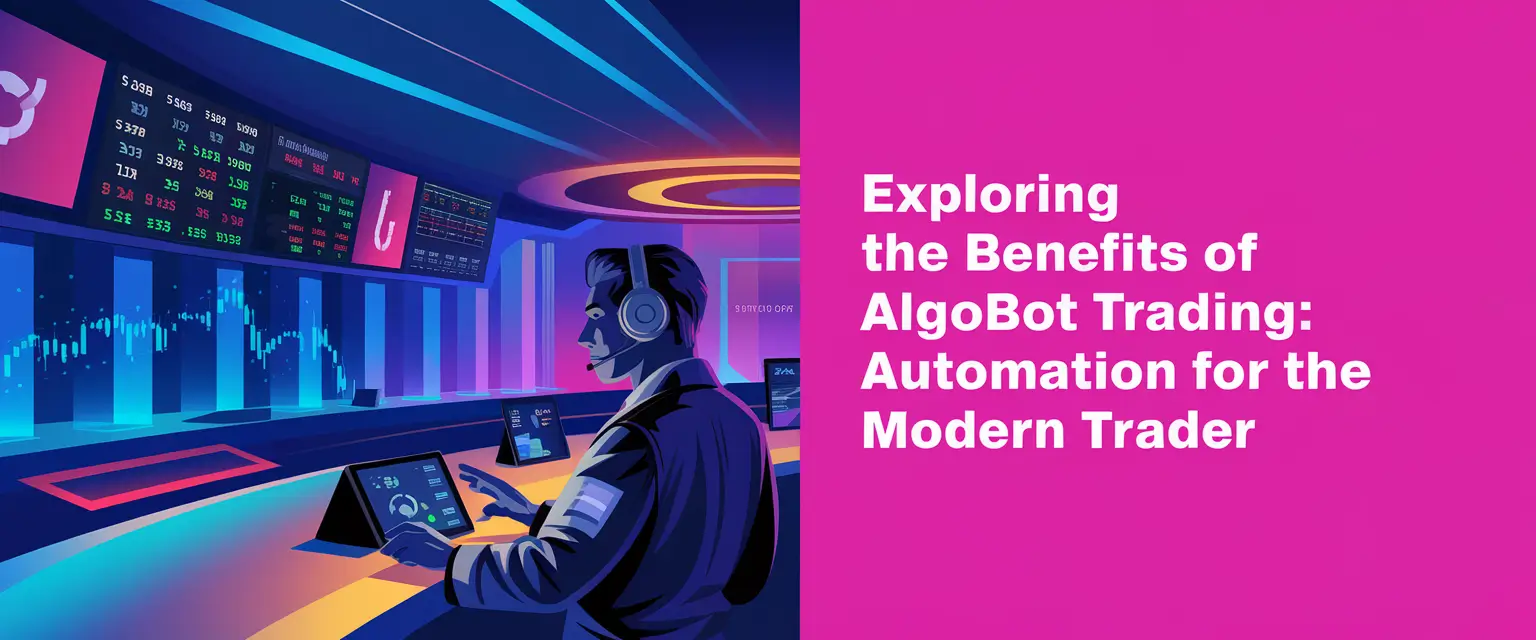Algo bots are increasingly becoming popular in the financial markets. These trading tools can outperform humans in terms of speed and efficiency. They can also constantly analyze market trends, calculate probabilities, and execute trades automatically.
This guide explores everything you need to know about algo trading bots. We also review the best algo bots of 2025, covering their performance, pricing, and features.
Top 10 Best Algo Trading Bots: In-Depth Reviews & Comparisons
Here’s a summary of the top algo trading bots in the market today:
- Algobot – A well-rounded algo trading bot for beginners and professionals alike. Uses algorithms and AI to scan the market and manage positions accordingly. Can be used in automated, semi-automated, and manual modes. Supports forex, crypto, stocks, commodities, and indices.
- Forex Fury – Fully automated algo trading bot for the forex markets. Can be linked to all MT4 and MT5 platforms. Trades all major currency pairs during low volatility periods.
- ByBit – A leading crypto trading platform providing predesigned bots. Available strategies include Grid, Martingale, DCA, and more. Users also receive AI recommendations for top-performing bots.
- StockHero – Copy stock trading bots developed by professionals. Find bots for both long and short markets, incorporating different strategies. Works with multiple brokers and offers access to TradingView tools.
- FreqTrade – Open-source crypto trading bot with a strategy repository. Code strategies using Python and run the bot on leading crypto exchanges. Supports backtesting and demo trading modes.
- Admirals – Access an auto-invest feature to buy stocks and ETFs starting from $1. Uses the DCA strategy to schedule investments based on market conditions. Also has 0% trading commissions and allows up to five auto-invest plans per account.
- AvaTrade – Offers forex copy trading through ZuluTrade and Duplitrade. Users can copy from thousands of pre-vetted professional traders. Regulated and commission-free, AvaTrade also supports a wide range of forex pairs.
- PerceptTrader AI – Advanced forex algo trading bot leveraging AI. Built with the Martingale strategy and trades six major forex pairs. Can be used with all MT4 and MT5 trading platforms.
- Composer – Helps you create an automated trading strategy based on investment goals. Uses AI to tailor parameters based on your risk level. Also automates trading execution directly from the bot platform.
- Shrimpy – An algo trading bot for efficient crypto portfolio management. Connect multiple exchange accounts and invest with different strategies. Allows users to access their account history via a data vault.
Top 10 Algo Trading Bots: In-Depth Reviews & Comparisons
We’ll now discuss the key features of the leading algorithmic trading bots. We review these bots based on supported assets, fees, performance, and much more.
1. Algobot – Overall Best Algo Trading Bot for 2025
Algobot is an efficient algo trading bot with a wide range of powerful tools. It uses predefined algorithms that incorporate artificial intelligence. Meaning, the bot is constantly learning and improving to adapt to different market conditions. It’s developed with over 17,000 lines of code and uses a variety of technical analysis tools.
Moreover, Algobot can operate independently. The bot continuously evaluates the market, assessing different potential outcomes. It then places trades based on the identified opportunities. To mitigate the risks, users can specify their goals, and Algobot will manage the positions accordingly. For instance, it sets stop-loss and take-profit levels based on the user settings.

This makes Algobot an ideal choice for beginners. Professionals can also use semi-automated and manual modes. This is ideal for bespoke customization. Furthermore, it’s possible to receive Algobot signals and execute them manually. Additionally, Algobot can be integrated with TradingView charts to perform technical analysis.
Algobot can be used for a variety of asset classes. This includes forex, crypto, stocks, commodities, indices, and even CFDs. For forex traders, Algobot is available from $50 a month. To access all markets, users will either pay $59.99 or $109.00 a month. All plans come with extensive video tutorials and premium customer support.
Pros: Cons:
Forex Fury is one of the best algo trading bots for forex traders. It’s compatible with MT4, MT5, FIFO, and other popular trading platforms. This bot can be used for all major pairs. It focuses on finding trading opportunities when the market has low volatility. The bot uses filters to ensure that trades are executed during such conditions. That said, Forex Fury only trades for one hour a day. And only one forex pair can be used for a single account. You can test your preferred settings via the demo platform. Moreover, Forex Fury showcases the bot’s past performance results, which are verifiable via Myfxbook. The cost of running this bot in one live account is $249.99. For two accounts, the price increases to $459.99. Although the bot has a one-time payment plan, users are offered regular updates. Forex Fury can also be used for crypto and indices. Pros: Cons:
ByBit is an excellent choice for crypto traders searching for preconfigured bots. This popular crypto trading platform has a large marketplace of algo strategies. Crucially, ByBit users don’t need to pay anything extra to access these bots. This means you only need to pay the trading commission. This starts at 0.10% for makers and takers. Getting started takes seconds – just choose your preferred strategy and order size. Some of the leading strategies include Grid, DCA, Martingale, and others. ByBit bots can be deployed in both spot and futures markets for hundreds of crypto coins. The platform also features AI-recommended bots for specific pairs based on their market performance. Alternatively, you can chat with the TradeGPT tool, mention your investment goals, and receive personalized suggestions. After choosing a bot, you can adjust settings like stop-loss and take-profit levels. ByBit also offers access to advanced charting tools. This includes candlestick charts, technical indicators, and more. Pros: Cons: StockHero is a popular platform for copy trading bots. It lets you leverage the experience of other traders by mirroring their strategies like-for-like. You simply need to pick a bot, allocate funds, and run it. Moreover, bots can be tested in paper exchanges before being deployed in live markets. On StockHero, you can find bots that cater to all market conditions. There are bots using strategies like long and short, scalping, DCA, high frequency, and more. StockHero also offers a signal service that informs you when a potentially profitable trade is spotted. You’ll be notified via emails, SMS, or app notifications. StockHero’s cheapest plan costs $4.99 a month and offers access to one bot and broker. The Premium and Professional packages offer access to the bot marketplace at $49.99 and $99.99 a month, respectively. The upper-tier plans also come with support for multiple brokers, TradingView, and the AI chatbot. Pros: Cons:
If you possess coding skills, FreqTrade is a free and open-source crypto trading bot worth considering. It’s developed in Python and works with all popular crypto exchanges. You can code your strategy and even find inspiration from the dedicated repository. It’s also possible to download historical data from your preferred exchanges to backtest strategies. FreqTrade constantly evolves using machine learning methods. This ensures you’re always one step ahead of market cycles. Users can optimize their strategies with take-profit, trailing, and standard stop-loss parameters. Your chosen crypto markets can be prioritized, or you can blacklist coins you want to avoid. Crucially, this algo trading bot can be controlled via Telegram or a WebUI. You can activate and suspend the bot, access performance reports, and manage positions this way. FreqTrade can also be deployed in both demo and live modes. The former allows you to constantly test and refine strategies without risking capital. Pros: Cons:
Admirals is a popular brokerage platform supporting a wide range of assets. Its auto-invest option lets you set up recurring purchases of stocks and ETFs. There are thousands of popular stocks to choose from. The algo trading bot uses the DCA strategy to set up periodic investments. The bot can be configured to make weekly or monthly investments. The algo trading bot will decide the specific time of the transaction based on real-time market conditions. Traders can build up to five auto-invest plans with a single account. However, only one plan is allowed per asset. Crucially, the minimum transaction amount required for this bot is just $1. Admirals doesn’t charge any trading commissions or extra fees to access the bot. However, you’ll need to cover deposit and withdrawal charges, plus dynamic spreads. Note that this feature is available only via the Admirals mobile app. Pros: Cons:
Algo trading bots are one of the flagship features of AvaTrade. This regulated brokerage supports multiple algo platforms. This includes ZuluTrade, which facilitates copy trading for the forex market. It offers a wide selection of experienced traders to follow. Zulutrade lets you start with a $500 investment. AvaTrade also supports Duplitrade, which requires $2,000 – making it fitting for experienced traders. This algo trading provider mirrors trades based on signals developed by other users. Crucially, AvaTrade thoroughly vets traders for additional risk management. The platform also features historical trading data so you can make educated decisions independently. There is also a free demo account to test strategies in simulated markets. AvaTrade also offers commission-free trading. In addition to forex, this covers other popular asset classes, including crypto, stocks, ETFs, commodities, and indices. AvaTrade accounts take seconds to open and deposits can be made with a debit/credit card, e-wallet, or bank wire. Pros: Cons:
PerceptTrader AI is another popular forex algo trading bot. It uses advanced AI algorithms to conduct market research and identify trends. You can customize the bot’s behavior to match your goals and risk appetite. You can also choose between fixed and dynamic lot sizes and specify maximum slippage. PerceptTrader AI is compatible with all MT4 and MT5 platforms. This bot supports six forex pairs, namely – NZD/USD, USD/CAD, AUD/NZD, AUD/CAD, GBP/CHF, and NZD/CAD. You can connect up to five accounts to a single bot. Users can backtest the bot’s strategies and optimize them accordingly. This AI trading bot also integrates with ChatGPT and Google Bard for AI-based market forecasting. However, these features come at a one-time fee of $2,260. You’ll also receive regular updates and access to an exclusive Telegram community. There is also a 30-day money-back guarantee offered. Pros: Cons:
If you’re looking to automate your stock trading strategy, consider Composer. This trading platform comes with an in-built AI editor. You simply need to explain your trading goals, preferred strategies, and risk concerns. Composer’s AI tool will suggest an algo trading strategy based on these parameters. You’ll also be able to backtest the strategy and convert it into an algo bot. Composer also comes with predesigned strategies, such as long-term, tech-focus, and diversification. The bot executes these strategies and rebalances your portfolio automatically. Orders are executed via its partner brokers, Alpaca Securities or Apex Clearing. What’s more, you can also access strategies developed by other users or showcase your own trading systems to the Composer community. Composer offers a free account, which lets you build your algo trading bot from the ground up. However, to execute trades on partner brokers, you must take the Trading Pass at $24 a month. There is also a 14-day free trial for the paid plan, which should be enough time to test the platform adequately. The main drawback is that Composer is only accessible to US residents. Pros: Cons:
Shrimpy lets you link your crypto wallets and exchange accounts for automated portfolio management. This algo trading bot can handle portfolio rebalancing, indexing, and stop-losses for your crypto assets. Set custom fund allocations so that your portfolio will automatically adjust to changing market conditions. One standout feature is Shrimpy’s ability to view your portfolio at any point in history. For instance, you can analyze your older trades to gain insights. It also features a robust simulator, allowing you to test different crypto combinations for your portfolio. Shrimpy has also developed crypto baskets based on different themes. This includes use cases, privacy-based, smart contracts, and countless others. You can also build custom indices. This is ideal for investors who want to diversify into their preferred markets. Shrimpy’s free plan lets you connect your wallet to a single exchange. The paid plans start at $15 a month, allowing you to manage multiple portfolios. Pros: Cons:
Algo trading is a process of executing orders via automated, predefined strategies. Algo trading bots leverage these predefined instructions to place trades. For instance, an algo trading bot can be programmed to buy a stock when its price drops to a certain level. By using algo trading bots, you can eliminate the need for 24/7 market monitoring. These bots ensure that trades are carried out based on rules with minimal human intervention. Crucially, algo trading bots remove the emotional factor from decision-making. So, how do algo trading bots work? The primary goal of algo bots is to make trading more efficient. Put otherwise, you’ll be leveraging speed, precision, and advanced data analysis. Algo bot trading can be used for various financial assets, including stocks, forex, commodities, indices, and cryptocurrencies. Algo bots can elevate your trading strategy and improve your overall profitability. Here are some of the biggest benefits offered by alto trading bots in 2025. Perhaps the biggest advantage of algo trading bots is their speed. Advanced bots can process vast data sets and place trades in milliseconds. Needless to say, considerably quicker than the capabilities of human traders. This speed is extremely crucial in short-term trading, where even the slightest delay can result in missed opportunities and losses. No matter your experience level, human traders are always prone to emotional bias. When influenced by panic, impatience, or covetousness, human traders make errors. This makes it challenging to maintain discipline and stick to a specific trading plan. On the other hand, algo trading bots operate based on preprogrammed conditions and logic. This leads to more rational and consistent trading decisions. Crucially, you’ll never place trades based on emotional factors, such as fear or greed. Algo trading bots can be used to trade multiple assets and strategies simultaneously. Meaning, you don’t need to concentrate on one financial instrument or a single strategy. You can execute strategies such as Grid, scalping, arbitrage, or mean reversion with a single bot. You can also run one or more bots to capitalize on their unique features. This way, you can significantly reduce the risks associated with a single market and strategy. Manually testing a strategy can be time-consuming. Moreover, it also requires individual analysis. On the other hand, trying new strategies with algo bots is relatively easy and efficient. These bots can be backtested against historical data to assess their performance. This process helps optimize trading strategies to achieve better results. It allows you to identify potential flaws and improve the strategy’s accuracy before deploying it in live market conditions. When trading manually, you might not be quick enough to adjust the risk levels to changing market conditions. For instance, during a sudden market downturn, manually adjusting stop-loss orders may be delayed. This could potentially lead to larger-than-expected losses. This reactive approach contrasts sharply with the proactive risk management of algo trading bots. Algo trading bots excel in risk management by quickly reacting to market fluctuations. All in all, algo bot trading offers a dynamic risk management approach to traders. Algo trading bots can be classified based on their underlying strategy. Here are some of the most common trading bots available today. Trend-trading bots can identify and leverage market cycles. These bots use various technical tools to spot upcoming market trends. The most commonly used indicators for this strategy are moving averages, RSI, and trend lines. Once a trend is identified, the bot executes trades that align with the market’s direction. Trend trading bots are simple to comprehend and implement, even for beginners. However, these bots might be ineffective during sideways markets. Arbitrage algo trading bots seek out the price variations of the same asset between different platforms. For instance, these bots will buy a stock at a low price from one broker and sell it at a higher price at another. These bots are effective in markets where there is high liquidity and volatility, such as exotic forex pairs and crypto. Algo trading bots using the arbitrage strategy must be highly efficient in speed. Moreover, profit margins can be thin, because price discrepancies are typically minute. On top of this, you also have to account for trading commissions and spreads. This is why algo traders place high frequency trades via bots to generate more viable returns. These bots provide liquidity to the market by placing both buy and sell orders around the current price. In turn, market-making bots aim to profit from the bid-ask spread. They continuously buy assets at a lower bid price and sell them at a higher ask rate, thereby capturing the difference as profit. However, market-making strategies might not be viable during sudden price volatility. In such conditions, the bid-ask spread can widen significantly, and rapid price movements occur. This may lead to increased risk and potential losses. The core idea behind momentum trading is that assets showing a price trend will continue in the same direction. For instance, if a stock exhibits a downtrend, momentum traders assume it will continue to fall. Therefore, they aim to capitalize on the price momentum. Algo bots in this category make decisions based on indicators like the RSI and MACD. Momentum trading bots are also simple to implement and manage. However, precise stop-losses are crucial, as momentum can reverse at any time. Machine learning bots use AI to analyze market data and place trades. These bots are fed with historical data but can adapt to changing market conditions. They can uncover hidden correlations and predictive signals that traditional methods might miss. These algo trading bots are also equipped to use multiple strategies. They utilize technical indicators to arrive at the right trading plan for the respective market conditions. This way, you’re not restricted to one strategy or asset. With hundreds of algo trading bots in the market, you might be wondering how to choose the right one. Consider the following parameters when making a decision: When selecting an algo trading bot, make sure it supports the specific assets you’re interested in. Some bots specialize in certain markets, while others offer broader capabilities. For instance, Shrimpy is an algo trading bot focused exclusively on cryptocurrencies. On the other hand, Algobot supports a wide range of assets, including stocks, forex, crypto, commodities, and indices. Some bots can also function in both spot and derivatives markets. Considering what your preferred markets are will help narrow down your choices. A good algo trading bot should offer a high degree of customizability and flexibility. Meaning, you should be able to tailor the parameters to suit your requirements. Look for bots with flexible parameters such as the risk category (e.g. conservative/aggressive) and stop-loss levels (e.g. in percentage terms). This allows users to tailor trading strategies to their exact needs and risk tolerance. Additionally, some bots provide advanced features like the ability to write custom scripts or use prebuilt templates for more complex strategies. Evaluating a bot’s performance is essential before making a decision. Look for bots that supply comprehensive performance metrics, including historical data and backtesting results. Backtesting involves running the bot’s algorithm on past market conditions to see how it would have performed. Past performance doesn’t always reflect future results. But it can give you a good sense of the bot’s capabilities and potential profitability. Additionally, consider user reviews and testimonials. Bots with a strong track record and positive user feedback are generally more reliable and trustworthy. It’s also beneficial to test the bot on a paper exchange before running it with real money. This lets you observe its performance in real-time without risking any capital. Algo bots can increase your trading costs. Therefore, it’s important to understand what you’re paying. Consider whether the bot charges a one-time purchase fee, a monthly subscription, or a percentage of generated profits. Similarly, the same bot might have a tiered pricing structure. A more expensive option might offer advanced features, increased functionality, and superior customer support. Assess whether these add-ons are worth the additional cost. Ensure the algo bot can be used with your preferred trading platform. Some bots are designed to work with specific exchanges or brokers. As such, it’s crucial to verify compatibility before making a decision. For instance, Algobot is compatible with most trading platforms via third-party integrations. On the other hand, Composer can only execute trades via two brokers. Compatibility with multiple platforms can also provide enhanced flexibility. Not to mention support a wider range of strategies – especially arbitrate trading. While algo trading bots can be highly efficient, you must also have risk management systems in place. Follow these tips to effectively optimize your bot: Algo trading bots bring a lot to the table. They automate market analysis, deploy strategies, and execute trades – all on their own. However, finding the best algo bot isn’t an easy feat. This is why you should prioritize past performance, features, and fees. Algobot offers an incredible suite of tools for algo bot trading. This includes full automation for a complete passive experience. Users can switch between different risk modes, such as conservative, balanced, and aggressive. Algobot can be used for any asset class, including stocks, forex, crypto, commodities, and indices.
AlgoBot is one of the top algo trading bots available today. It can be used on autopilot to trade passively and has a win rate of over 81%. Supported assets vary from one algo trading bot to the next. The best providers are compatible with multiple assets, including crypto, forex, stocks, indices, and commodities. Algo bots execute trades by following preprogrammed instructions. They automatically analyze the market and optimize positions for maximum profitability. Yes, algo trading bots are legal. However, they must comply with the regulations set by financial bodies in their respective countries. Yes, it’s possible to make money with algo bot trading by leveraging automated strategies. However, success depends on the bot’s strategy, market conditions, and risk management.
2. Forex Fury – Algo Bot Trading for Low Volatility in the Forex Markets

3. ByBit – Choose the Right Crypto Algo Trading Bot Based on AI Recommendations
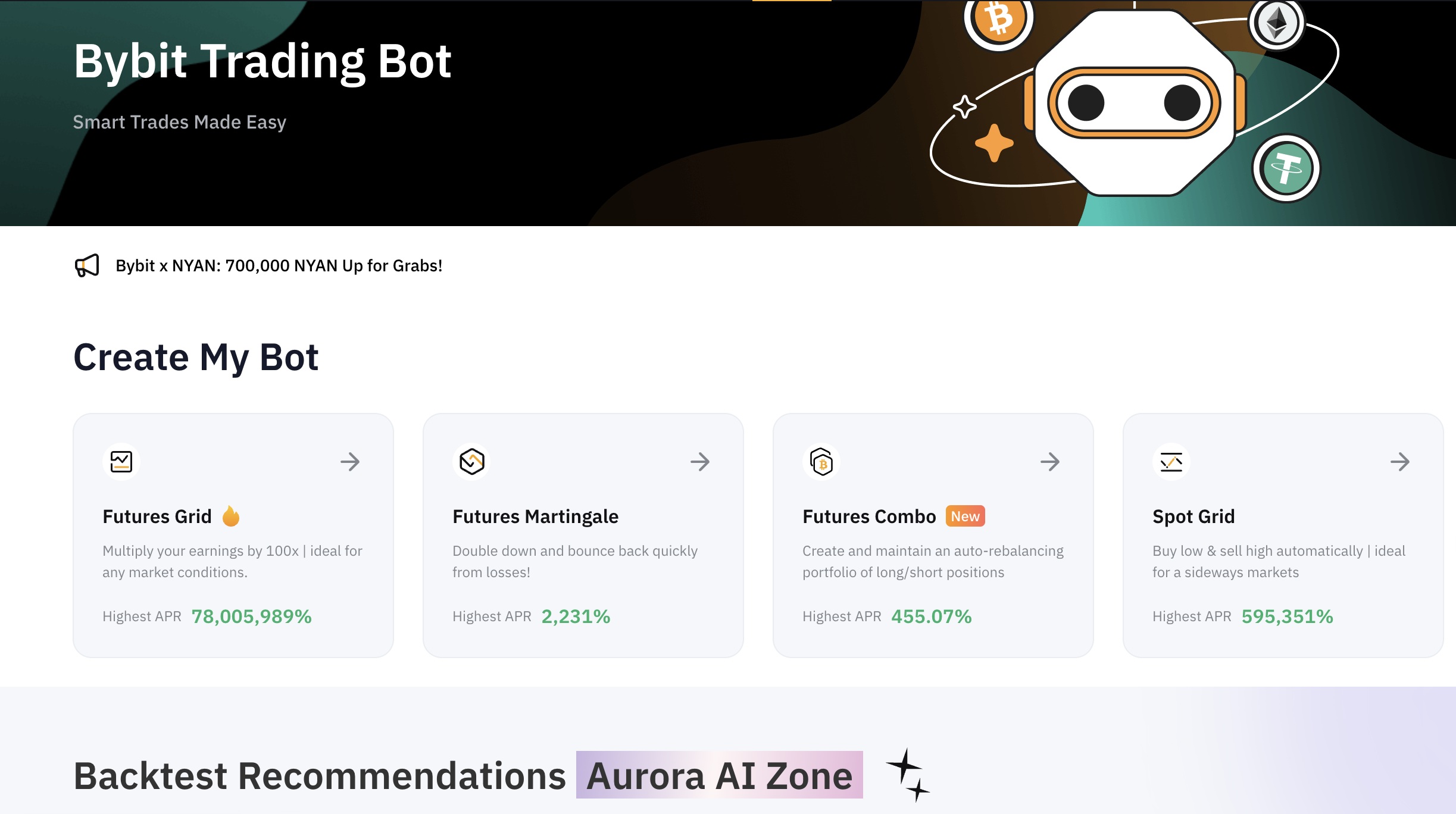
4. StockHero – Deploy Algo Trading Bots Developed by Experienced Traders
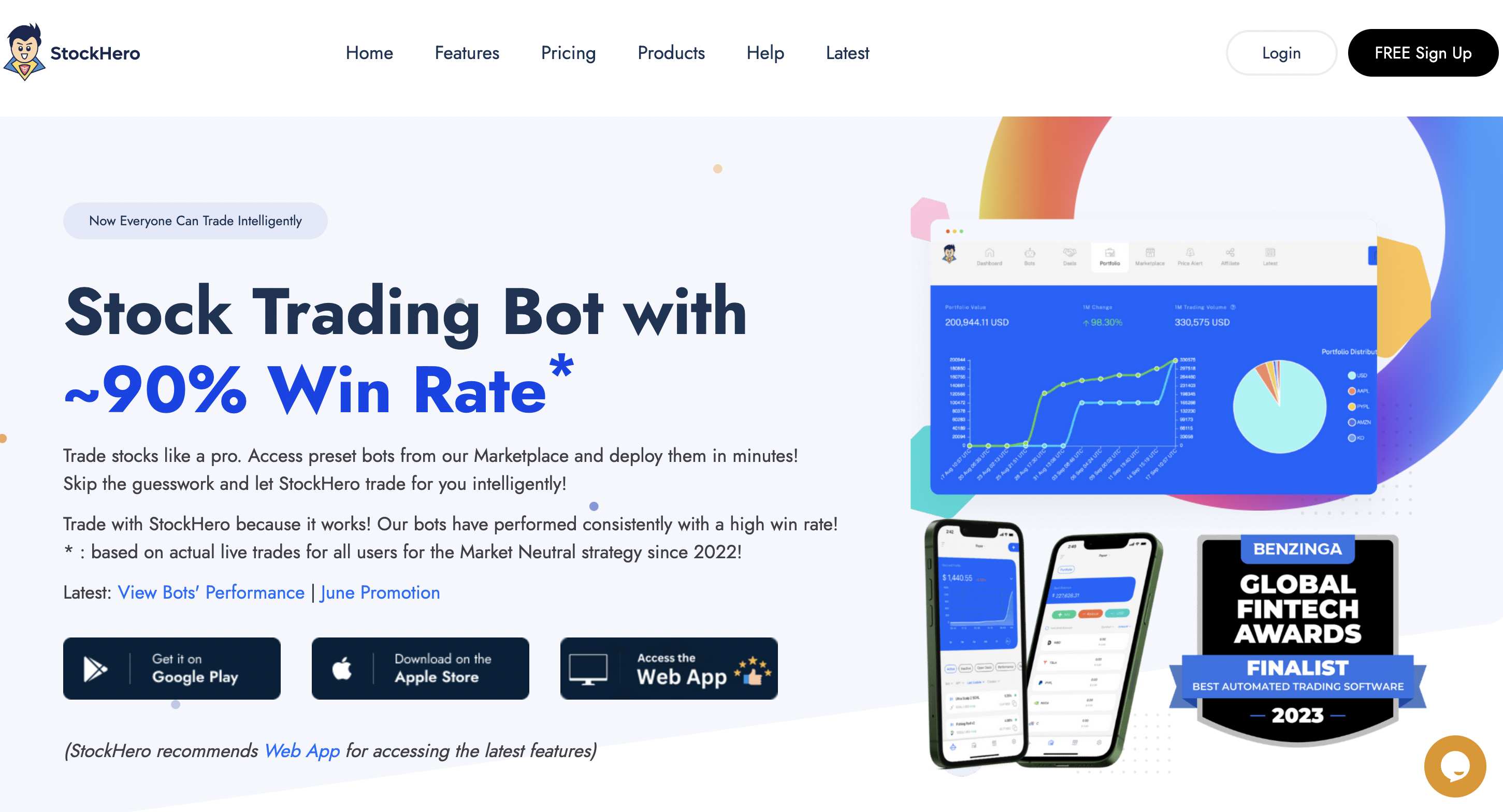
5. FreqTrade – Open-Source Crypto Bot for Tech-Savvy Traders

6. Admirals – Auto-Invest in Stocks and ETFs From $1

7. AvaTrade – Copy Forex Trades From Experienced Trades

8. PerceptTrader AI – Automated Forex Trading Bot For MT4 and MT5 Platforms
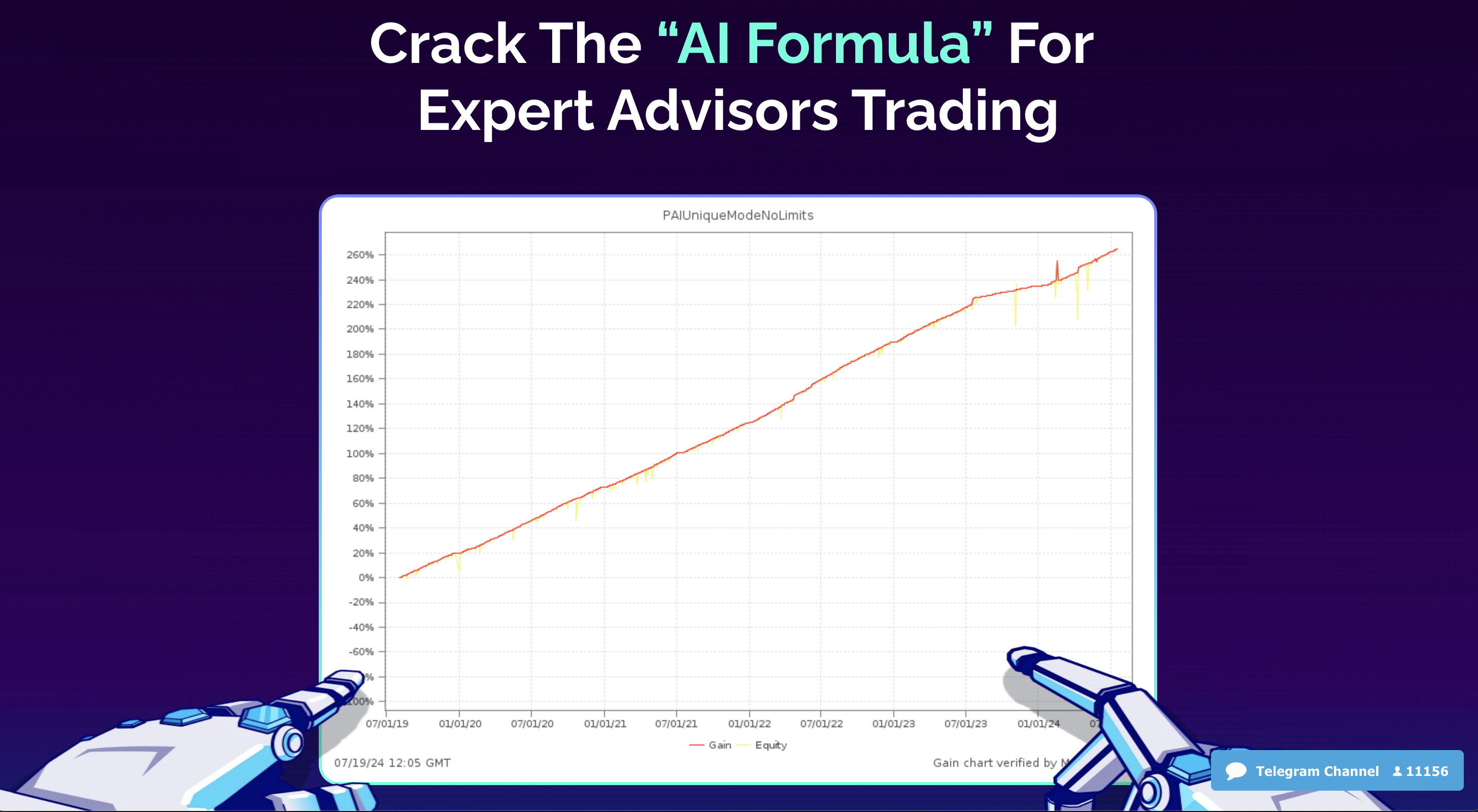
9. Composer – AI-Powered Bot Builder for Stocks and ETFs
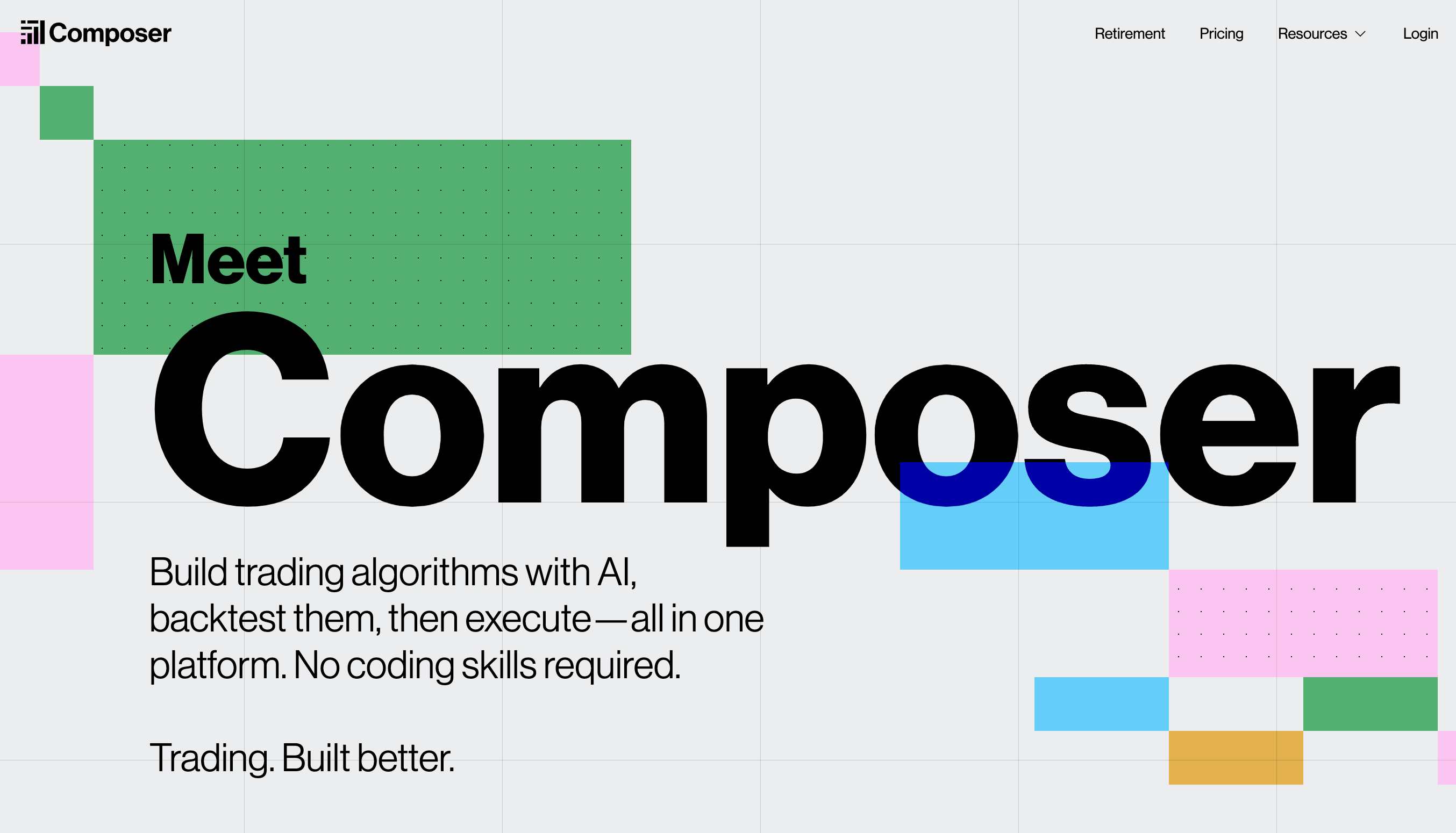
10. Shrimpy – Algo Bot Trading for Crypto Portfolio Management
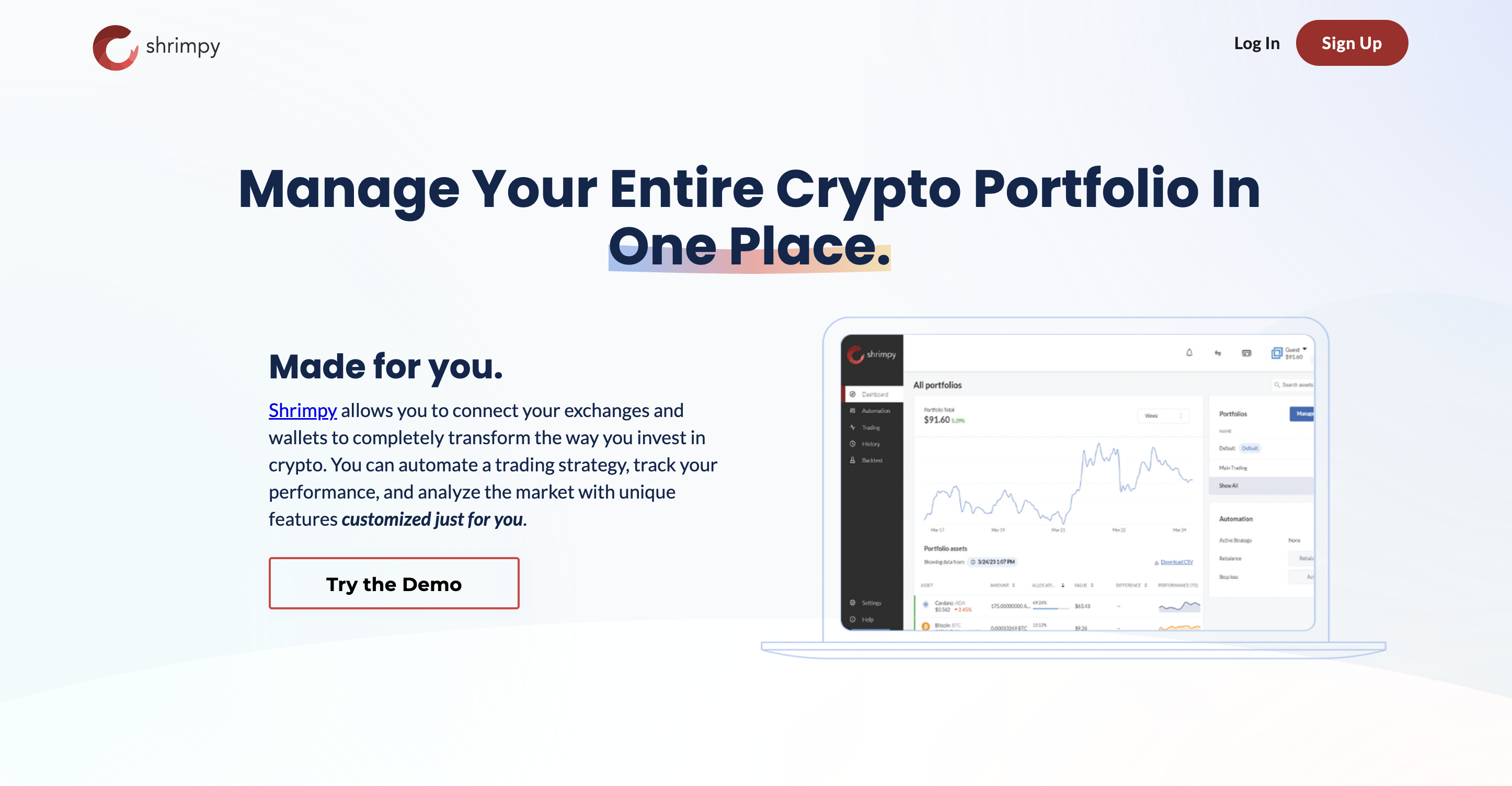
What Are Algo Trading Bots?
Key Benefits of Using Algo Bot Trading for Investment Success
Speed and Efficiency
Decision-Making Based on Rules, Not Emotions

Diversify Assets and Strategies
Backtesting and Optimization
Intelligent Risk Management
Types of Algo Trading Bots
Trend-Trading Bots

Arbitrage Bots
Market-Making Bots
Momentum Bots
Machine Learning Bots
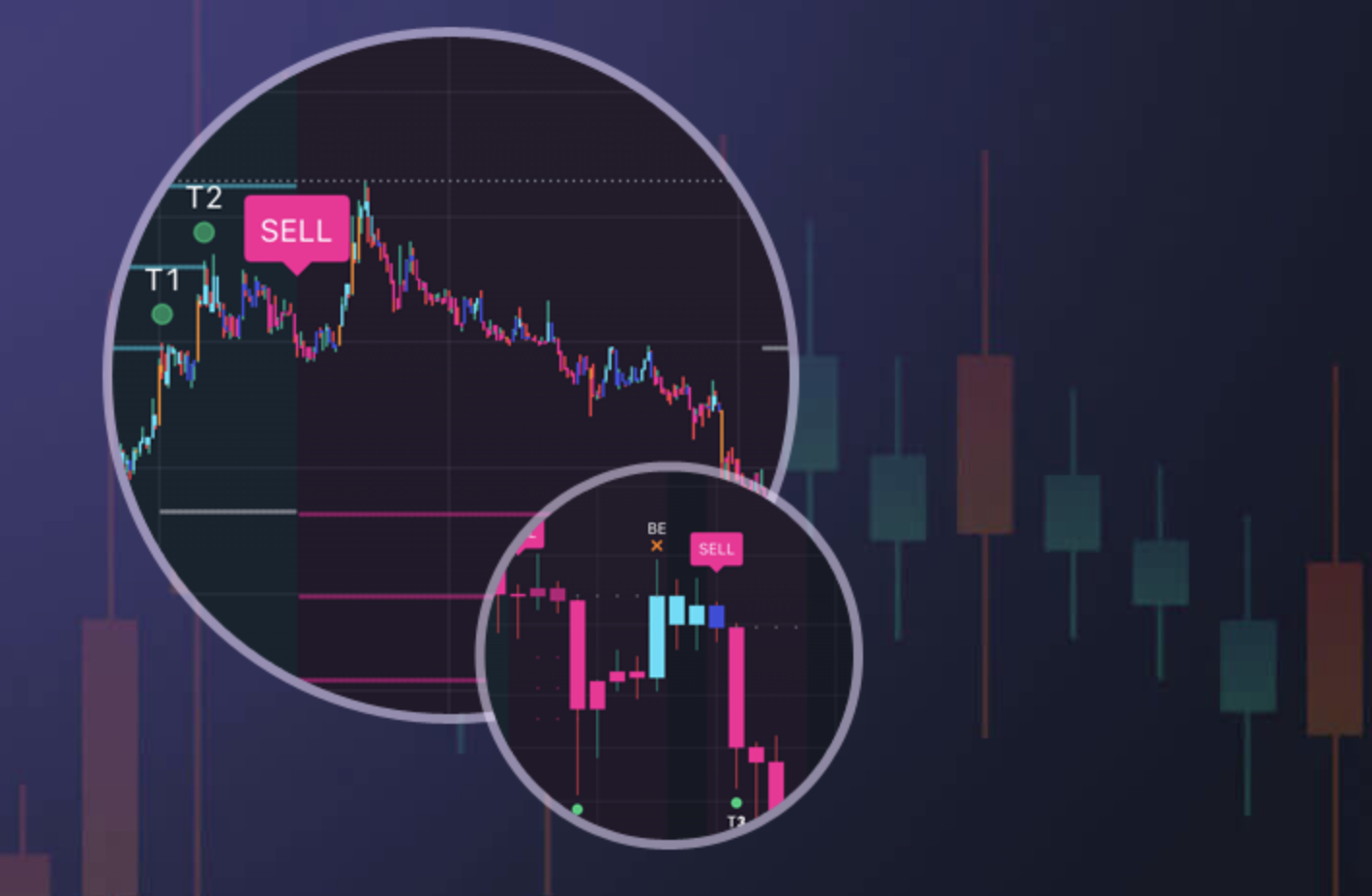
Selecting the Right Algo Trading Bot
Tradable Assets
Customization and Flexibility
Track Record
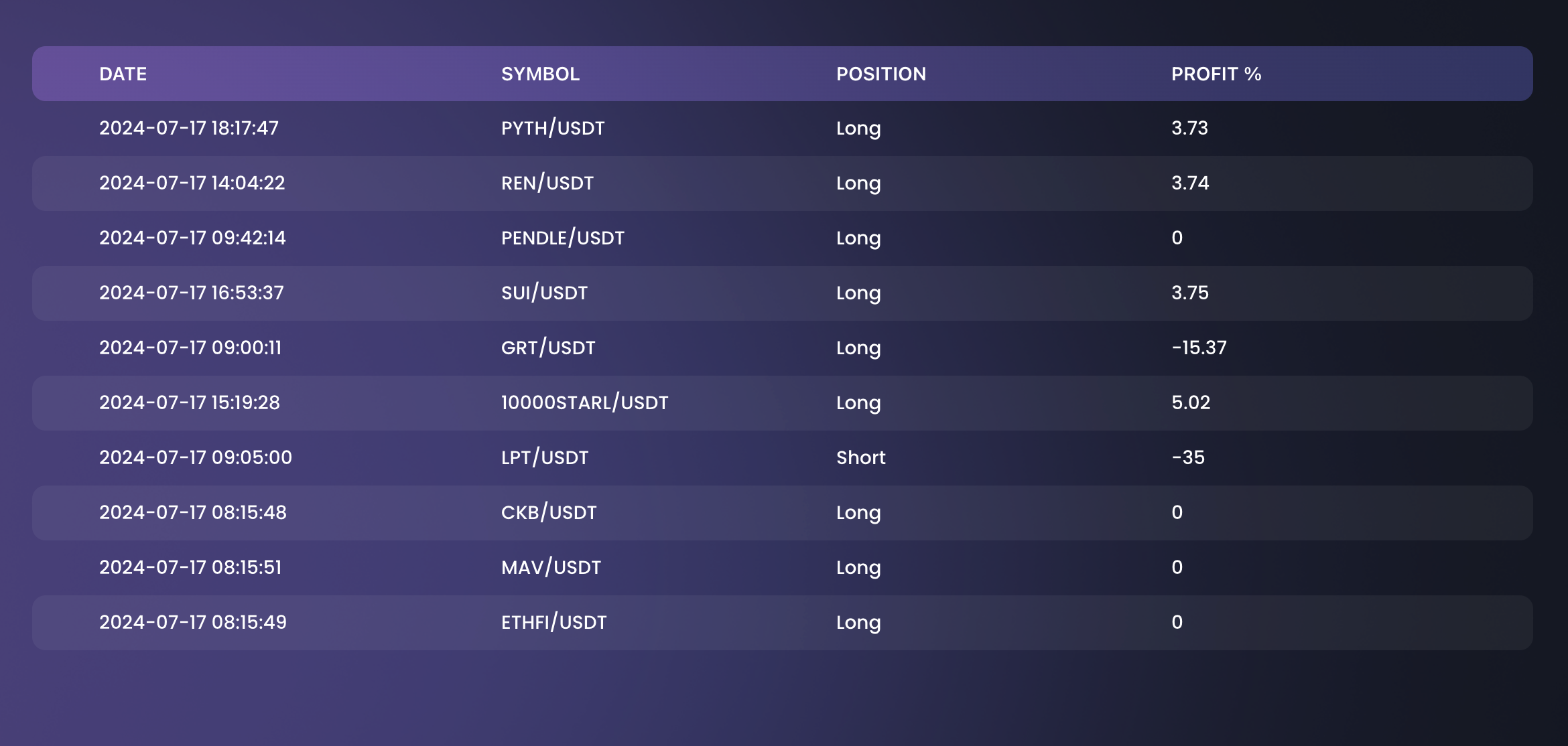
Fees
Compatibility With Trading Platforms
Tips for Optimizing Algo Trading Bots
Conclusion
FAQs
What is the best algo trading bot?
What assets can be traded using algo trading bots?
How do algo trading bots work?
Are algo trading bots legal?
Can you make money with algo trading bots?
